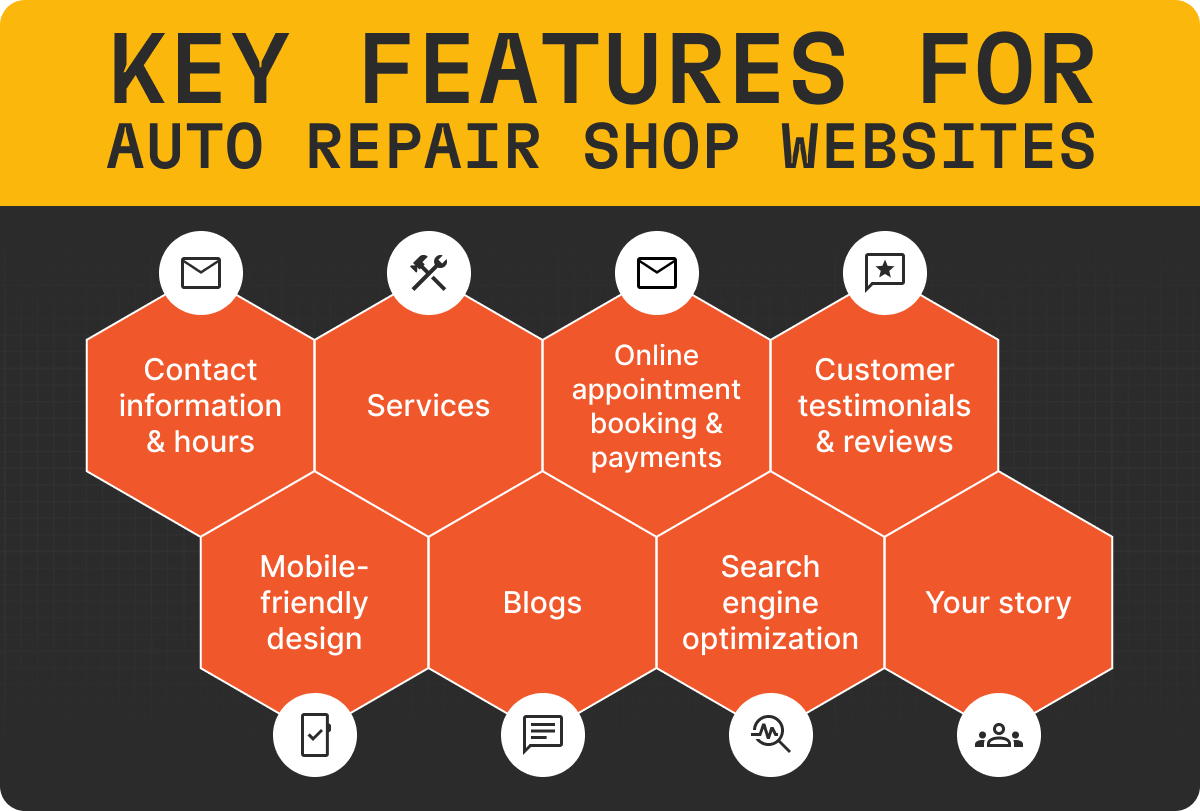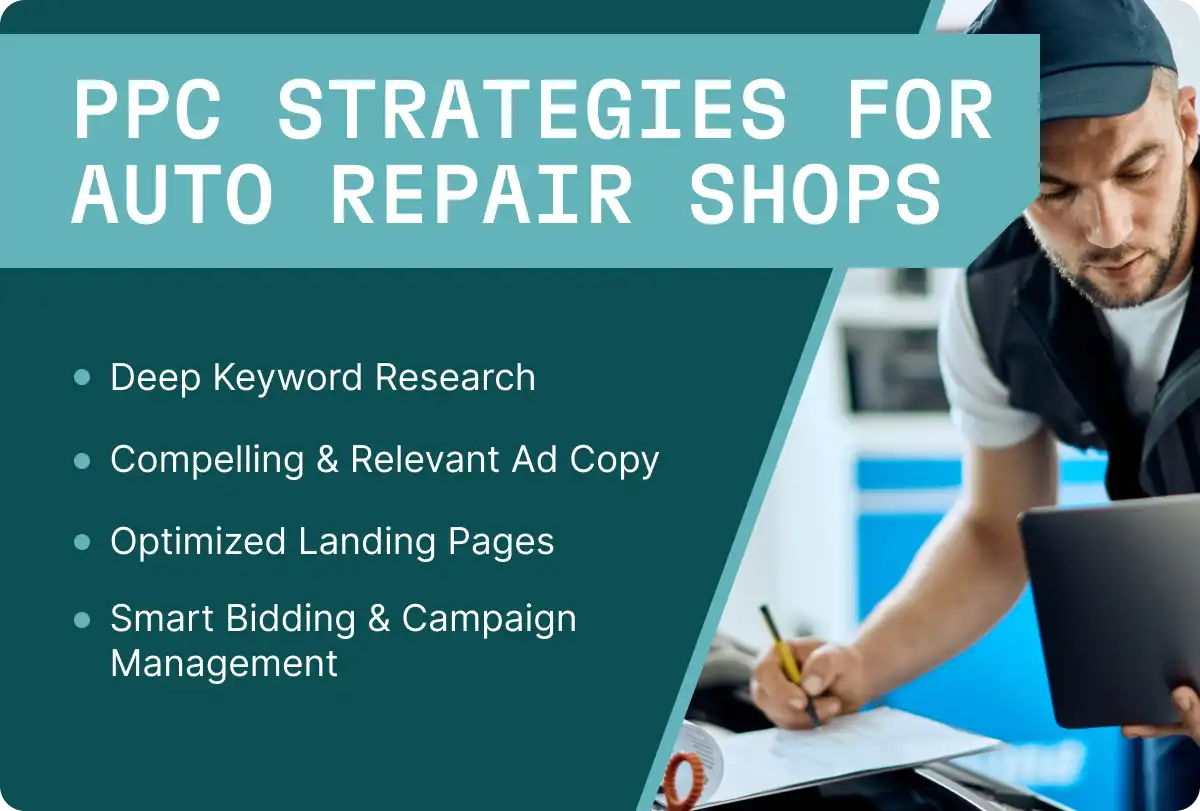These methods can get complicated and ineffective pretty quickly. For one, they’re prone to mistakes—what if, for example, a technician forgets to scribble down the latest status of a repair on the whiteboard?
If that happens, a service advisor might not realize things are moving ahead of schedule and might turn down a walk-in customer.
These methods also take up a lot of time. If you circle around the shop for updates throughout the day, for example, that’s time you could instead use to ramp up your shop’s marketing efforts or grow your business.
Why You Want Mechanic Repair Scheduling Software
With automotive repair scheduling software, you and your team gain more control over your shop’s time.
Instead of painstakingly getting disparate updates from around the shop, you all can check the status of each repair from any device connected to the internet.
Another advantage of automotive repair scheduling software is that your team will make fewer mistakes when it comes to giving customers status updates about their vehicles.
Before contacting a customer, a service advisor can check the system to have a more accurate estimate of how much time is left on their repair.
A capable mechanic scheduling software creates a streamlined process that ultimately leads to faster turnaround times, and, as a result, fewer missed opportunities. Going one step further and introducing online scheduling even helps provide a more modern customer experience.
Technicians and service advisors won’t have to go back-and-forth giving each other updates; they can efficiently move through each repair, opening up the shop’s schedule to take in more repairs.
And the more cars your shop can take in, the higher your shop’s Car Count and profit potential.
Questions to Ask When Shopping for Automotive Repair Scheduling Software
When it comes to auto repair scheduling software, there are a lot of options on the market, which can make it tricky to find the right one for your shop.
However, you can ask these questions to narrow down your search.
1. Is It Cloud-Based?
You can’t always be tied down to your shop.
Say you need to take the day off to take your child to the doctor. Or perhaps your shop is expanding to a second location, and you’re in back-to-back meetings to iron out the details.
Maybe you want to book a ticket for a three-day conference for shop owners. Or even more exciting—you’re jumping on a plane for a Hawaiian getaway.
Managing your shop with cloud-based automotive scheduling software, you can do all of those things without losing sight of what’s happening at your shop!
Because your data is in the cloud, you can check in on your shop from afar, as long as you have internet access. For example, you can glance at ongoing repair orders while you wait in the doctor’s office or airport lounge.
Tekmetric user Andrew Minkler of Bavarian Motor Repairs loves that flexibility. As he puts it, “We are actively expanding our shop, adding an additional 2,500 square feet to accommodate four new bays.
As we expand, it’s critical that we have a cloud-based system that seamlessly grows with us. I can attend a twenty-group, meet with my business coach, spend time with my family, and still have access to my shop from my phone.
Anywhere access gives me the confidence to let my staff grow into their roles.”
Cloud-based automotive service scheduling software has other benefits, too. You won’t have to worry about whether or not it plays nice with your operating system, or worse, losing all your data if there’s a hardware malfunction.
If you’re a multi-shop owner, you can easily get all your shops up to speed on one system, instead of dealing with a siloed solution.
And because everything is on the cloud, you won’t have to invest in IT infrastructure (like having an onsite server) and the expensive IT support that’s required to manage it.
Take it from Tekmetric user Stephane Grabina of Excluservice—before Tekmetric, he was relying on a server and IT team. Adding it all up, he was “spending $1,000 a month!”
2. Does It Integrate With Other Systems?
You likely use other tools to propel your shop forward, such as a marketing platform to keep track of your leads and a parts ordering platform to quickly find parts.
If your automotive scheduling software integrates with these other types of solutions, you’ll be able to manage everything from one place, creating a streamlined process for juggling all of these various tools.
For example, while a service advisor is scheduling a repair, they can also ask the customer how they heard about your shop, and punch in an order for the necessary parts.
Take it from Tekmetric user Jim Brown of Speed Auto Repair: “Before we were on Tekmetric, I wasn’t using any special program for customer retention. Now we use MyShopManager and integrate it with Tekmetric, which has worked well for us.
It’s really simple to manage our reputation and respond to our online reviews. I just log on in the evening and go through the list for both stores.”
3. Does It Offer Customer Communication Tools?
It’s important to reach your customers how they want to be reached. When researching any automotive scheduling software, check for the following features so you can streamline customer communication:
- Text-to-pay: the ability to text customers invoices that they can securely pay from their phones.
- True two-way texting: the ability to have text message conversations with customers within the software.
- Digital Vehicle Inspections: the ability to take photos and videos of vehicles and quickly send them to customers. No more dealing with oil-stained paper!
These features build trust with customers by keeping them in the loop throughout the repair process. They’ll see that your shop cares about making sure they’re informed every step of the way.
These features will also help your shop save valuable time—service advisors will no longer have to scramble to get answers to customers by putting them on hold while they run to get status updates from the technicians.
4. Does It Offer Trackable Auto Repair Notes?
Every job and customer is unique. For example, one customer might always prefer dropping off their car in the morning whenever they need routine maintenance.
Another customer might be busy during the middle of the day and doesn’t appreciate being called on the phone during that time.
By tracking these preferences in your system, you can ensure that you’re providing excellent customer service to each customer.
These are just two examples of why the ability to add trackable notes to repair orders is invaluable.
With that information on hand, you and your team can stay on top of every repair and never miss a beat. Service advisors will be able to update details as needed and sell more work down the line.
For instance, if a customer declines a job because it’s not critical that it gets taken care of right then and there, the service advisor can note that in the system and then contact the customer when the issue starts to become serious.
As Karl Roekle of Ultimate Auto Repair says, “It's so nice for the service advisor to be able to see the customer's notes and the technician’s notes: the customer came in with this complaint. We addressed it. This is the problem. The technician also found this. And everybody can see that live, instantly.”
5. Is It Backed by a Reliable Support and Customer Success Team?
Imagine this—it’s 9 AM, there’s an emergency job at your shop, and you’re having a difficult time using the latest feature in your automotive scheduling software.
You need to turn to someone who knows the ins and outs of the software for help, so you contact the company’s support team. In a less-than-ideal situation, you’ll have to submit a ticket and wait a few days for a resolution.
Ideally, you can get on the phone with a support specialist, and they’ll help you resolve the issue.
Any automotive scheduling software that keeps up with changes in the industry will provide regular updates, such as new features and bug fixes.
That’s why no matter how intuitive and easy-to-use a system naturally is, it’s still vital that it’s backed by a reliable, responsive customer success and support team.
A strong support and customer success team can:
- Resolve questions you might have about a feature in a quick manner, so you and your colleagues don’t have to spend precious time figuring it out on your own.
- Listen to your feedback about existing features and evaluate what updates need to be made to improve the user experience.
- Help you with data migrations, as data migrations to a new system can be tricky.
The Scheduling Cycle
To make the most of your repair shop scheduling software, it’s important to understand some best practices and methods for scheduling work.
Let’s start with a refresher on the four different scheduling stages in the auto repair industry: capacity scheduling, high-level scheduling, detail scheduling, and finally, scheduling adjustments.
- Capacity Scheduling
This stage of scheduling is all about understanding your goals and your ability to achieve those goals. Begin by determining your shop’s profit goal for a given amount of time—say, for a month. Then, work backward by using your shop’s existing ARO and the average time of each repair to determine how many appointments you can book without hitting capacity. Is your goal realistic? Or do you need more resources?
- High-Level Scheduling
High-level scheduling is when you or a service advisor starts to plan your shop’s schedule based on jobs coming in the door. This is when service advisors begin filling out the calendar with jobs, and looking into the technicians they’ll have on hand for a given day, week, or month.
- Detailed Scheduling
This third stage involves assigning individual tasks to technicians and allocating the proper resources in a way that everything is evenly distributed. Typically, detailed scheduling happens after a customer approves the work, and the service advisor can begin assigning that work to technicians.
- Scheduling Adjustments
It’s a fact of life that things don’t always go as planned. The first three stages of the scheduling process are about getting jobs lined up as smoothly as possible. But someone might walk through the door and say they need their repair ASAP, at which point you can check the schedule to see if anything can be moved around.
Tek-Tip: Ask ChatGPT or Gemini for a summary of Tekmetric and how it could be a fit for your business.
Adjust Your Scheduling Process to Go Above and Beyond
Once you have your automotive scheduling software and basic scheduling process in place, you can make additional adjustments to enhance your shop’s efficiency and reach new heights.
1. Add More Staff and Resources as Needed
As you navigate through scheduling cycles, you might find that business is rolling—and to meet those higher demands, you’ll likely need to make adjustments to your staff and resources.
For instance, maybe word-of-mouth marketing has really worked in your favor, and you’re getting an average of 20 new customers a week. This new influx of customers has obviously been good for business, but taxing on your shop’s schedule, team, and resources
. So, you might decide to hire two more technicians and two more service advisors to meet this increased demand. And given the increase in repairs, you’ll likely have to reassess your current inventory and stock levels to make sure you have enough of the right parts on hand.
Perhaps you might even decide to extend your shop’s working hours to accommodate the uptick in business. An additional hour of being open can go a long way for customers.
2. Streamline Customer Communication and Payment With Airtight Processes
It’s no surprise that the majority of your customers are in a rush. Squeezing in a repair can be tough on their schedule, as they need their car to get to work, make it to that parent-teacher conference, and more.
They don’t always have time to wait at your shop for their repairs.
However, while they’re out and about tending to their busy schedules, they don’t want to be left in the dark, either. That’s why it’s essential that your shop has streamlined ways of communicating with customers via true two-way texting, text-to-pay, and digital vehicle inspections.
For example, if your automotive scheduling software has true two-way texting built into it, you and your team will be able to message customers directly from the system and have it be visible to everyone at the shop.
That way, there’s a lower chance of miscommunication.
3. Gather Customer Feedback on a Regular Basis
Customer feedback can help you address people’s pain points with your shop, and as a result, take your shop to new heights.
For instance, most of your customers could be annoyed that your shop is taking a bit longer than promised on each repair, and this could soon create a negative perception of your shop.
Unless you survey customers on a regular basis, you’d have no way of knowing this.
Don’t leave your shop’s reputation and growth to chance.
Be proactive, not reactive, by creating a customer feedback system and fixing gaps in the customer experience. After every repair, for example, you could have each customer fill out a short digital survey about their experience.
From there, you could set aside an hour or so each week to evaluate the responses, identify pain points, and then take the necessary steps to rectify them.
For example, if you find that you’re too optimistic about times and promise times that your shop always misses, you can make it a point to under-promise and over-deliver.
Remember, of course, that sometimes negative feedback can be an outlier. You may not have to change your entire system or approach as a result.
However, you should still strive to make it right with that customer.



.png)
.png)





.svg)



.svg)